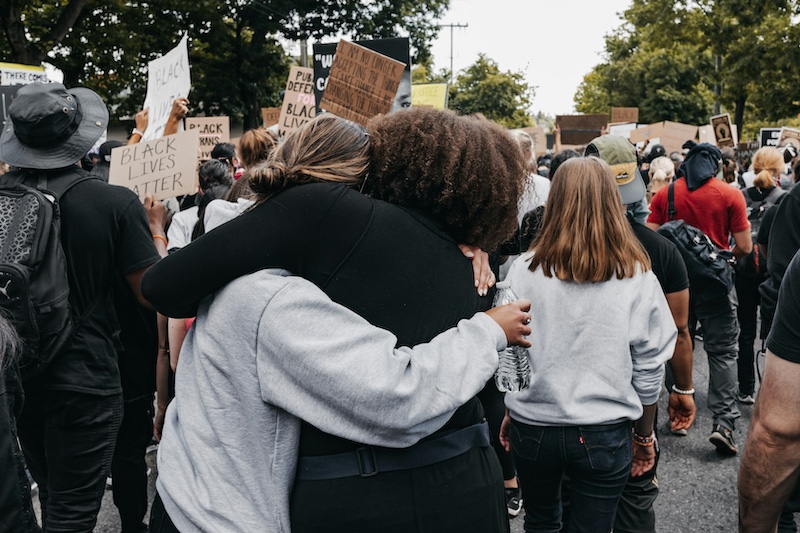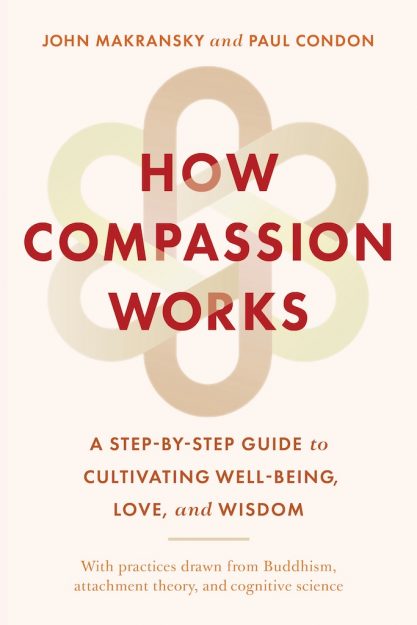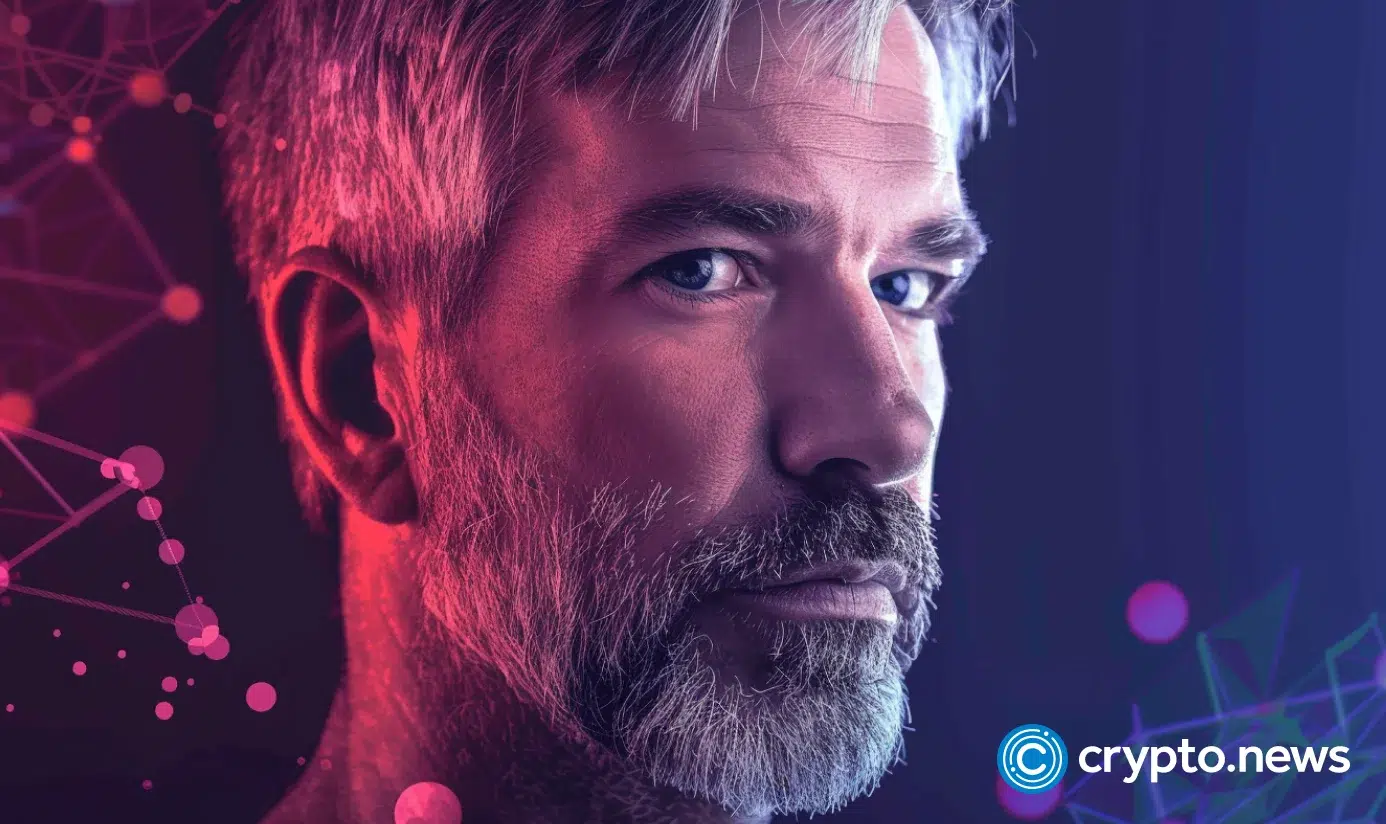Using Compassion for Institutional and Social Change
How to cultivate love for people we oppose The post Using Compassion for Institutional and Social Change appeared first on Tricycle: The Buddhist Review.

Many of us who serve others in caring roles or professions also work to change institutional or social structures that we see as harming or holding back the people we serve. To work to change such structures is often to work against the positions of other people who are committed to those structures. We are prone in such work to mistake our angry thoughts of those people for the persons themselves. We oppose the people, not just their positions or actions, with an aversion for them that we may mistake for righteousness. This is common among social activists and can lead to growing anger and hatred toward people who oppose our positions.
Anger can get us moving for social change, but if it becomes a dominant motivation, many problems follow. Anger is typically self-protective, projecting distorted images of others that prevent us from staying in touch with their fuller human experience and potential. When we are immersed in self-righteous anger, we cannot listen deeply to others. Such anger, when cultivated as a primary motivation for social change, tends to make us increasingly defensive and abrasive, which turns people off. As a result, we can’t get the help we seek, which can make us angrier in a downward spiral. Ironically, we can wind up imitating the domineering methods of our political opponents in the name of opposing them, without conscious awareness.
Many social activists take pride in their anger at injustice. “If you’re not angry, you’re not paying attention” is a common slogan. The understanding is that anger is not just deluded but contains important wisdom. How so? Such anger knows that something is terribly wrong; something needs to be decisively confronted in order to make things safe and well for the poor, the oppressed, and the marginalized. If the wisdom in anger could be liberated from its distorted perceptions of other persons, including one’s opponents, its intense energy could clarify into a fierce form of compassion that is ferocious in upholding everyone in their essential dignity and potential by confronting the forces of narrow self-concern, greed, prejudice, hatred, and violence—forces that wield all of us more than we are conscious. For this we need to be grounded in a compassionate level of our being—the caring equanimity that is not imprisoned in the reactions of a brittle, angry sense of self that has lost touch with the unconditional worth of everyone involved, including political opponents.
As bell hooks wrote,
We have witnessed the way in which movements for justice that denounce dominator culture, yet have an underlying commitment to corrupt uses of power, do not really create fundamental changes in our societal structure. When radical activists have not made a core break with dominator thinking. . . , there is no union of theory and practice, and real change is not sustained. That’s why cultivating the mind of love is so crucial. When love is the ground of our being, a love ethic shapes our participation in politics. To work for peace and justice we begin with the individual practice of love, because it is there that we can experience firsthand love’s transformative power.
Inclusive-mode practices help us come from the depth of our being to sense all others in their depth as beings of great dignity and potential. The compassion meditations (including tong-len) familiarize us with our own painful feelings of fear, self-protectiveness, grief, rage, and so forth, so we can sense from inside what many of our opponents on social issues may also feel within their own perspectives. Then our vision of others can no longer be reduced to caricatures of them projected by our own self-righteous anger.
When Martin Luther King Jr. organized against social institutions of racism and economic inequality, his opponents attacked him and his people with ferocious dogs, whips, hoses, guns, and more. Yet King taught that unconditional love is the key to social change. He taught that we must confront oppressive social structures on behalf of everyone involved, including those supporting such structures. He never conceptualized his movement for positive social change as only on behalf of oppressed people. It was also on behalf of those people wielding the attack dogs and whips.
Many are ready to fight the evil they see in others. Fewer know how to bring out the capacity for goodness in themselves and others. This is the crying need today.
This is the essential difference between ordinary anger and fierce compassion. Ordinary anger is motivated by fear and aversion; fierce compassion is motivated by a force of love that has the courage to confront people for their own sake. Anger seeks to protect the self or one’s own self-righteousness. Fierce compassion seeks to uphold all others in their deepest potential by challenging whatever in them impedes that potential.
If we learn to reconnect with the vision and energy of these meditations in daily life, repeatedly reconnecting with and gradually stabilizing our vision of everyone’s deep dignity, our work for change can become more sustainable for ourselves and more effective for others. Instead of getting increasingly enraged in the work, driving away supporters and leading ourselves to burnout, we can become more caring, grounded, and energized, which can attract support from those who share our desire to work for change in a deeply grounded and sane way.
Social Action Is Not Mainly About Fighting Evil; It’s About Bringing More Goodness Into the World
Fighting the evil we perceive in others is never the best way to understand any work we do for social change. The evil we see in others is never just in them but also in us, and it is intensified by not recognizing that. When we act from a perception of others’ evil, we evoke the evil in them. When we act from a perception of others’ dignity and positive potential, we reinforce that in them.
As Thomas Merton wrote,
The saints are what they are, not because their sanctity makes them admirable to others, but because the gift of sainthood makes it possible for them to admire everybody else. It gives them a clarity of compassion that can find good in the most terrible criminals. It delivers them from the burden of judging others, condemning other men. It teaches them to bring the good out of others by compassion, mercy, and pardon. A man becomes a saint not by conviction that he is better than sinners but by the realization that he is one of them, and that all together need the mercy of God.
Many are ready to fight the evil they see in others. Fewer know how to bring out the capacity for goodness in themselves and others. This is the crying need today. Our ability to do this is cultivated by all the meditations in this book. We become more present to others’ humanity and potential, and the destructive tendencies that impede their potential, as we become more present to our own. As meditations reveal the underlying openness and positive power of our being, and the patterns of reaction in us that have held them back, we become more aware of the same in others—what needs to be upheld in them and what needs to be challenged for their sake as well as for the sake of others. And we listen better when others, for our sake, challenge some of the ways we think or act.
Building on the vision of Martin Luther King Jr., bell hooks wrote,
King believed that love is “ultimately the only answer” to the problems facing this nation and the entire planet. I share that belief and the conviction that it is in choosing love, and beginning with love as the ethical foundation of politics, that we are best positioned to transform society in ways that enhance the collective good.
Introducing a Compassion Meditation to Empower Social and Ecological Action
Think of some problem or injustice that you deeply care about, in empathy with those who are suffering from it—for example, protection of immigrants and refugees; protecting living beings and the natural world from environmental destruction; protecting those who suffer from racial, religious, or ethnic oppression; upholding women’s rights; making health care affordable for all; helping people obtain a decent wage; protecting victims of violence or war; protecting LGBTQ+ persons; protecting communities from gun violence; assisting the incarcerated; or providing a good education for all. Think first of those who are suffering under that problem or injustice, for whom you deeply care. Then think of someone who fights for the other side of that issue, against the changes that you believe are necessary to address that suffering.
A Practice: A Meditation for Extending Compassion to Those Suffering Injustices and to Those in Opposition
Step 1. Settling Into Body And Breath (2 To 3 minutes)
Sit in a relaxed way, with back comfortably straight, eyes gazing gently downward. Come down from the thinking mind into the body and settle into the grounded feeling of the body on your seat.
Let the breath flow naturally while breathing from the abdomen, so you feel the belly expand and contract with each breath. Let that feeling draw you into it more and more, breath by breath.
Step 2. Reconnecting With Love And Compassion (3 To 5 minutes)
Now bring to mind your field of care as present here with you now. You are being seen and held in deep care, compassion, acceptance, and warmth beyond judgments. Relax into the felt sense of this experience, steeping in its loving energy and tender qualities and letting them infuse your whole being. Accept these loving qualities into your whole body, heart, and mind—every part of you loved in its very being.
Step 3. Extending Care (5 To 10 minutes)
Let the loving energy come through you to those who are suffering under the injustice (humans or other beings). Let this caring energy help you connect with them in their dignity and potential, sensing them also in their layers of suffering, to wish them deeply well and free of the causes of the suffering. After a little while, let the loving energy come through you both to that first group who is suffering and now also to those who are fighting the changes you think are needed to address that suffering. Let this loving energy help you connect with them in their dignity and potential, sensing them also in their hidden layers of suffering, to wish them deeply well and free from the causes of their suffering.
If part of your mind is having difficulty with this practice, settle back into your field of care, reunite with its healing environment, and become compassionately aware of that part of you (that sense of self) with spacious acceptance and warmth. When that part of you settles and your mind un-blends from it, you can return to the practice of extending warmth and love.
Step 4. Releasing (3 To 5 minutes)
After some time, let this loving environment of warmth and compassion help your mind to relax, settle back a bit inwardly, release all its frameworks of worry and concern, and become naturally wide open like space. As thoughts and feelings arise, let them metabolize themselves and release within this sky-like openness of awareness by letting everything be.
◆
From How Compassion Works: A Step-by-Step Guide to Cultivating Well-Being, Love, and Wisdom by John Makransky and Paul Condon. © 2025 by John Makransky and Paul Condon. Reprinted in arrangement with Shambhala Publications, Inc. Boulder, CO

 Hollif
Hollif 
































